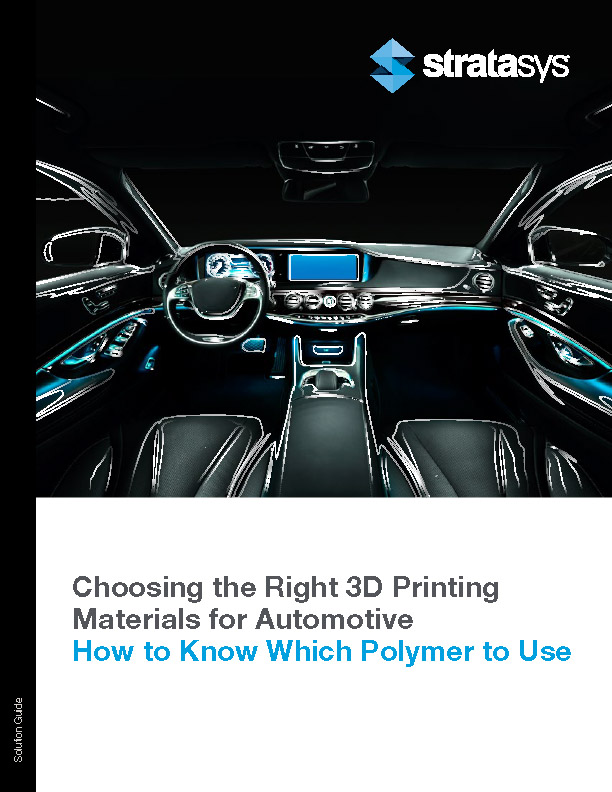Material Guide for Automotive
General Motors faced a challenge with heavy steel "risers" on an overhead conveyor system, hampering efficiency. Rather than choosing aluminum, they innovatively opted for 3D-printed nylon polymer with carbon fiber reinforcement, reducing weight by 32% and cutting lead time by 75%. This shift from traditional metal to polymer in 3D printing aligns with a growing trend in the automotive industry.
Additive Manufacturing (AM) offers diverse advantages for autos. To maximize its potential, choosing the right AM technology is crucial. Our companion Solution Guide, "How to Choose the Right 3D Printing Technology for Automotive Manufacturing," delves into this topic. When it comes to materials, polymer 3D printing stands out, offering:
- Fewer resource constraints
- Accessibility and ease of use
- A wide range of materials at various price points
- Lightweight yet strong alternatives to metal
We understand that the abundance of polymer options can be daunting. That's why our Solution Guide is here to help. It highlights suitable Stratasys AM technologies and materials for different automotive production phases, including Product Development, Production Support, and Part Production. Got questions? Feel free to reach out!




